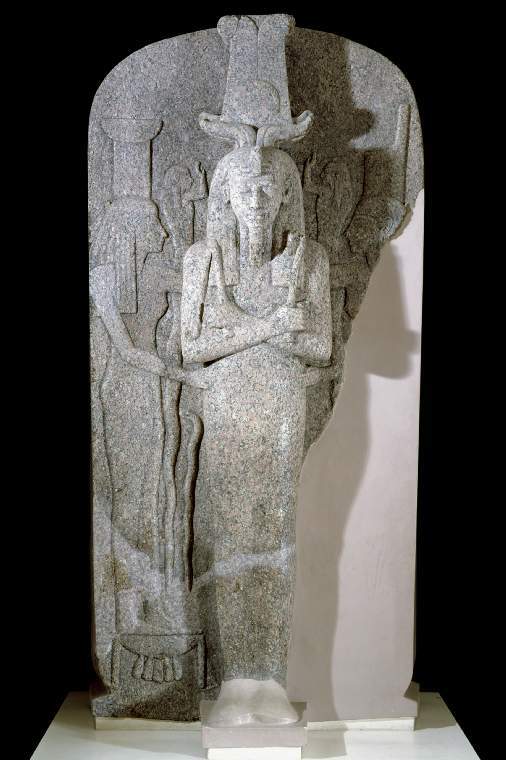Look and Think activities should take 5 -10 minutes.
Do activities might take longer depending on the task and how creative you are feeling!
Egypt, 12th century BC
Coffin lid of Ramesses III, ruled 1184 – 1153 BCE
Red granite
E.1.1823
Look
Do you think this might be someone important?
How can you tell?
Look closer here.
Think
This is the lid of an Egyptian King’s (a Pharoah’s) sarcophagus (stone coffin) made over 3000 years ago. It weighs about 7 tonnes.
How do you think the Ancient Egyptians carved this sculpture?
How do you think they moved it down the river 150 miles and then dragged it over 8 miles of desert to the Valley of the Kings?
Do
Can you make a raft to float Ramesses’ sarcophagus up the Nile?
Use what you can find at home and experiment with different shapes and sizes of boat.
What floats and what sinks?

On this Sarcophagus lid Ramesses III is shown as the god Osiris, in mummy form. In ancient Egyptian belief, the living king was thought to be the incarnation of the god Horus. When he died it was believed that he would be transformed into the god Osiris, ruler of the underworld.
You can spot he is important as Ramesses wears the sacred uraeus on his forehead as a symbol of his kingship. The uraeus shows a cobra rearing up ready to attack – the snake’s eyes never close – it is ever watchful on the Pharaoh’s behalf. He also wears a long plaited false beard, wig and the Atef Crown, made of ostrich feathers, the sun disk and ram’s horns. All of these are associated with Osiris who was believed to be the first ruler of Egypt. In his hands, Ramesses holds a flail ( that looks like a whip) and a crook (that looks like a mini walking stick), which became symbols of rulership also by their association with Osiris.
The protective sister goddesses Isis and Nephthys, can be seen standing on either side of the Pharaoh, embracing him and keeping him safe. Nephthys, on the left, stands on the hieroglyph for gold (a cows udder). Beside them are two half female, half snake figures who probably represent the goddesses Nekhbet and Wadjet, the patron goddesses of Upper and Lower Egypt. In addition, there were probably two other snakes, of which one is now visible.
The sarcophagus lid itself is shaped like a cartouche – royal names were usually written inside this cartouche shape, which is a form of an Egyptian sign which reads “shen” and means “to encircle”. In this instance the
cartouche surrounds the whole image of Ramesses. The sheer size, weight and appearance of this impressive object, coupled with its rich and powerful symbolism convey the status, importance and wealth of its owner, Ramesses III.
According to Helen Strudwick Associate Curator (Ancient Egypt), this granite sarcophagus lid was found in the tomb of Ramesses III in the Valley of the Kings, which is fairly close to the tomb of Tutankhamun. It is not clear when the object was damaged, but it may have been caused by tomb robbers trying to reach the king’s treasure. The Pharoah’s mummified body would have lain inside several other wooden and gold coffins within this sarcophagus.
Recent excavations in the burial chamber of this tomb have uncovered several more fragments of granite. Their shape suggests they belong to this sarcophagus lid, but they do not fit. This makes us think that Ramesses III may have had a second granite sarcophagus. This is possible because one of his predecessors, King Merenptah, who was also buried in the Valley of the Kings, had at least three granite sarcophagi. This raises the fascinating question of whether all the coffins and sarcophagi were fitted together before they were put into the burial chamber, which would have been a monumental undertaking. Or they might have been assembled inside the burial chamber, which would also have been extremely difficult. What do you think?